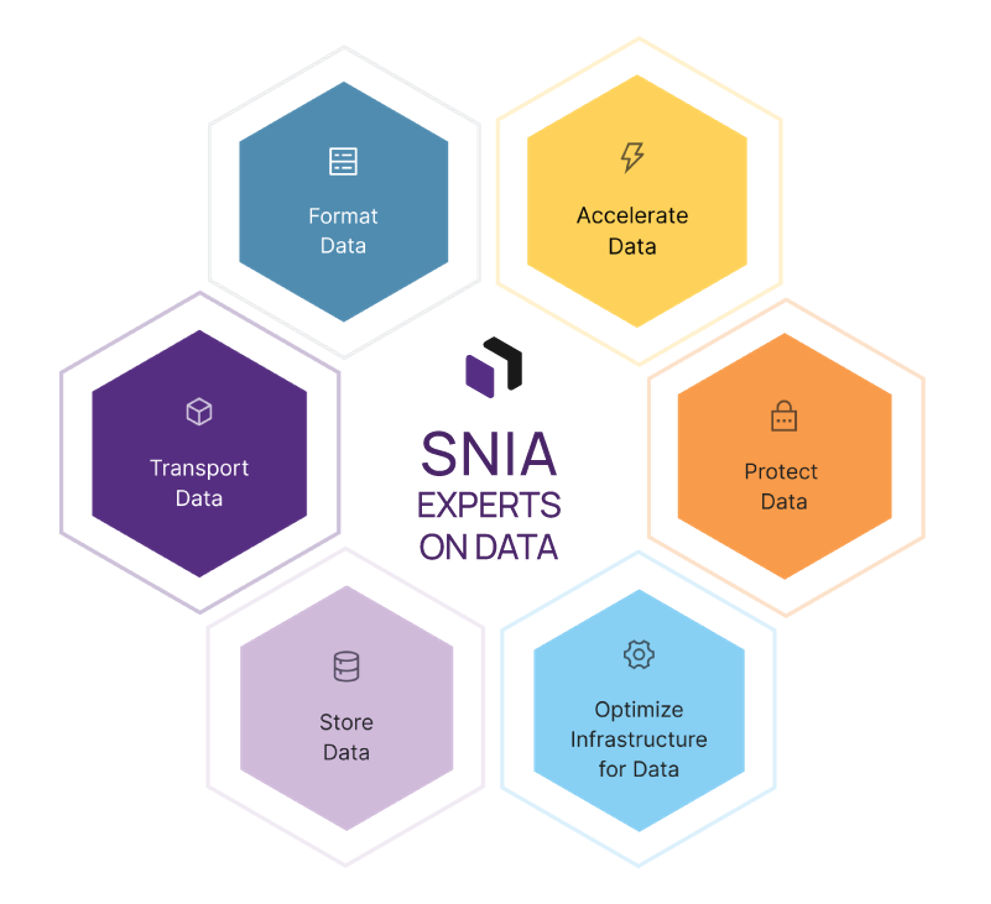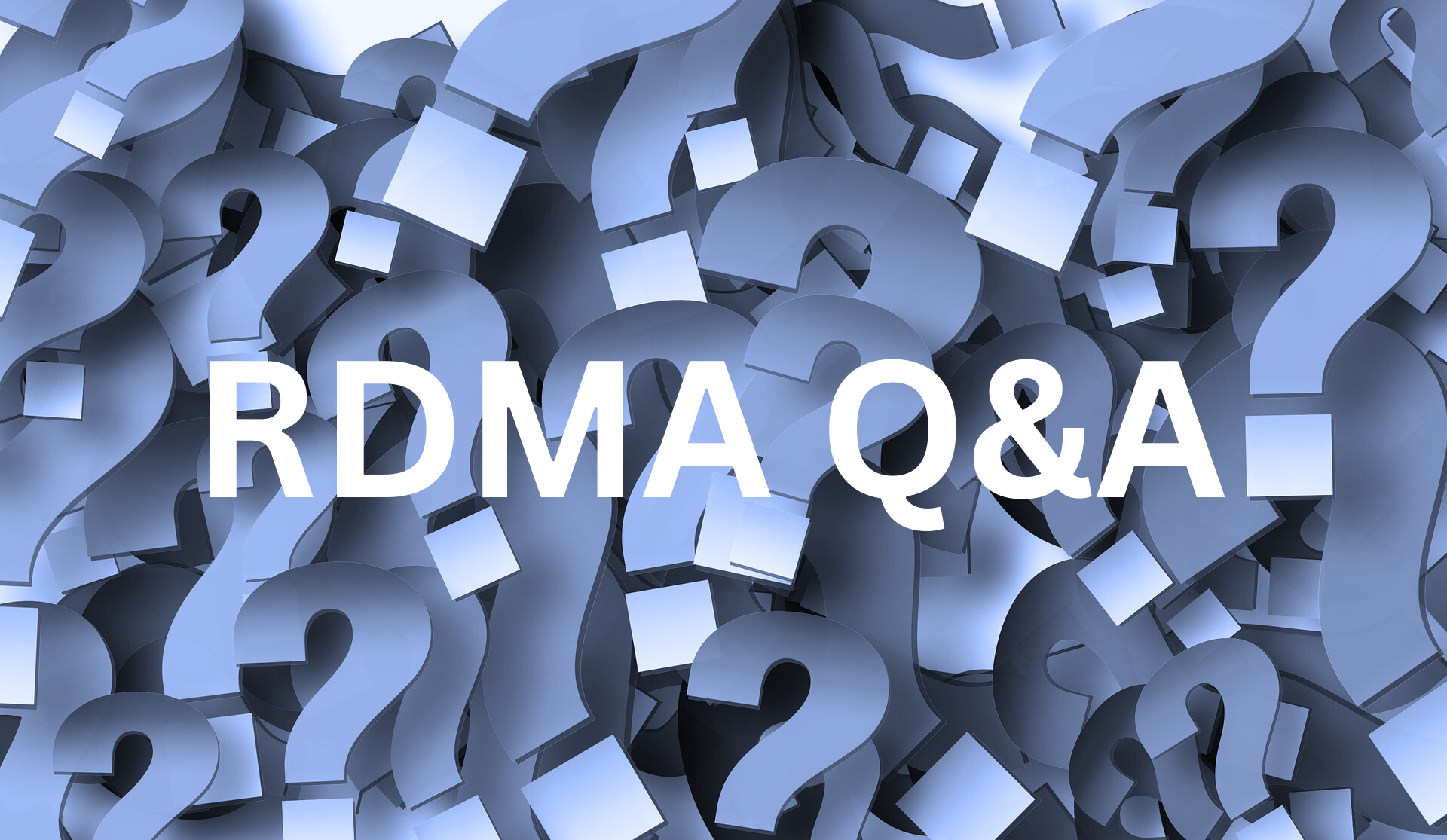 This series of webcasts, hosted by the SNIA Networking Storage Forum, is going to tackle an ambitious project – the scope of securing data, namely storage systems and storage networks. Obviously, many of the concepts and realities contained in this series are going to be broadly applicable to all kinds of data protection, but there are some aspects of security that have a unique impact on storage, storage systems, and storage networks.
Because of the fact that security is a holistic concern, there has to be more than “naming the parts.” It’s important to understand how the pieces fit together, because it’s where those joints exist that many of the threats become real.
Understanding Storage Security and Threats
This presentation is going to go into the broad introduction of security principles in general. This will include some of the main aspects of security, including defining the terms that you must know, if you hope to have a good grasp of what makes something secure or not. We’ll be talking about the scope of security, including threats, vulnerabilities, and attacks – and what that means in real storage terms.
Storage Encryption
This is a subject so vast that it deserves its own specific session. It is a foundational element that affects hardware, software, data-in-flight, data-at-rest, and regulations. In this session, we’re going to be laying down the taxonomy of what encryption is (and isn’t), how it works, what the trade-offs are, and how storage professionals choose between the different options for their particular needs. This session will also lay the groundwork for future webcasts (especially Securing the Data and Storage Regulations).
Securing the Data and the Media
When you look at the holistic concept of security, one of the most obvious places to start are the threats to the physical realm. Among the topics here, we will include “Data Encryption at Rest,” physical security, self-encrypting drives, and other aspects of how data and media are secured at the hardware level.
Securing the Protocol
Different storage networks have different means for creating security beyond just encrypting the wire. We’ll be discussing some of the particular threats to storage that are specific to attacking the vulnerabilities to data-in-flight. Here we will be discussing various security features of Ethernet and Fibre Channel, in particular, secure data in flight at the protocol level, including (but not limited to): MACSec, IPSec, and FC-SP2.
Security Regulations
It’s impossible to discuss storage security without examining the repercussions at the regulatory level. In this webinar, we’re going to take a look at some of the common regulatory requirements that require specific storage security configurations, and what those rules mean in a practical sense. In other words, how do you turn those requirements into practical reality? GDPR, the California Consumer Privacy Act (CCPA), other individual US States’ laws – all of these require more than just ticking a checkbox. What do these things mean in terms of applying them to storage and storage networking?
Securing the System: Hardening Methods
“Hardening” is something that you do to an implementation, which means understanding how all of the pieces fit together. We’ll be talking about different methods and mechanisms for creating secure end-to-end implementations. Topics such as PCI compliance, operating system hardening, and others will be included.
Obviously, storage and security is a huge subject. This ambitious project certainly doesn’t end here, and there will always be additional topics to cover.
For now, however, we want to provide you with the industry’s best experts in storage and security to help you navigate the labyrinthian maze of rules and technology… in plain English.
Please join us and register for the first webcast in the series, Understanding Storage Security and Threats on October 8th.
This series of webcasts, hosted by the SNIA Networking Storage Forum, is going to tackle an ambitious project – the scope of securing data, namely storage systems and storage networks. Obviously, many of the concepts and realities contained in this series are going to be broadly applicable to all kinds of data protection, but there are some aspects of security that have a unique impact on storage, storage systems, and storage networks.
Because of the fact that security is a holistic concern, there has to be more than “naming the parts.” It’s important to understand how the pieces fit together, because it’s where those joints exist that many of the threats become real.
Understanding Storage Security and Threats
This presentation is going to go into the broad introduction of security principles in general. This will include some of the main aspects of security, including defining the terms that you must know, if you hope to have a good grasp of what makes something secure or not. We’ll be talking about the scope of security, including threats, vulnerabilities, and attacks – and what that means in real storage terms.
Storage Encryption
This is a subject so vast that it deserves its own specific session. It is a foundational element that affects hardware, software, data-in-flight, data-at-rest, and regulations. In this session, we’re going to be laying down the taxonomy of what encryption is (and isn’t), how it works, what the trade-offs are, and how storage professionals choose between the different options for their particular needs. This session will also lay the groundwork for future webcasts (especially Securing the Data and Storage Regulations).
Securing the Data and the Media
When you look at the holistic concept of security, one of the most obvious places to start are the threats to the physical realm. Among the topics here, we will include “Data Encryption at Rest,” physical security, self-encrypting drives, and other aspects of how data and media are secured at the hardware level.
Securing the Protocol
Different storage networks have different means for creating security beyond just encrypting the wire. We’ll be discussing some of the particular threats to storage that are specific to attacking the vulnerabilities to data-in-flight. Here we will be discussing various security features of Ethernet and Fibre Channel, in particular, secure data in flight at the protocol level, including (but not limited to): MACSec, IPSec, and FC-SP2.
Security Regulations
It’s impossible to discuss storage security without examining the repercussions at the regulatory level. In this webinar, we’re going to take a look at some of the common regulatory requirements that require specific storage security configurations, and what those rules mean in a practical sense. In other words, how do you turn those requirements into practical reality? GDPR, the California Consumer Privacy Act (CCPA), other individual US States’ laws – all of these require more than just ticking a checkbox. What do these things mean in terms of applying them to storage and storage networking?
Securing the System: Hardening Methods
“Hardening” is something that you do to an implementation, which means understanding how all of the pieces fit together. We’ll be talking about different methods and mechanisms for creating secure end-to-end implementations. Topics such as PCI compliance, operating system hardening, and others will be included.
Obviously, storage and security is a huge subject. This ambitious project certainly doesn’t end here, and there will always be additional topics to cover.
For now, however, we want to provide you with the industry’s best experts in storage and security to help you navigate the labyrinthian maze of rules and technology… in plain English.
Please join us and register for the first webcast in the series, Understanding Storage Security and Threats on October 8th.
 This series of webcasts, hosted by the SNIA Networking Storage Forum, is going to tackle an ambitious project – the scope of securing data, namely storage systems and storage networks. Obviously, many of the concepts and realities contained in this series are going to be broadly applicable to all kinds of data protection, but there are some aspects of security that have a unique impact on storage, storage systems, and storage networks.
Because of the fact that security is a holistic concern, there has to be more than “naming the parts.” It’s important to understand how the pieces fit together, because it’s where those joints exist that many of the threats become real.
Understanding Storage Security and Threats
This presentation is going to go into the broad introduction of security principles in general. This will include some of the main aspects of security, including defining the terms that you must know, if you hope to have a good grasp of what makes something secure or not. We’ll be talking about the scope of security, including threats, vulnerabilities, and attacks – and what that means in real storage terms.
Storage Encryption
This is a subject so vast that it deserves its own specific session. It is a foundational element that affects hardware, software, data-in-flight, data-at-rest, and regulations. In this session, we’re going to be laying down the taxonomy of what encryption is (and isn’t), how it works, what the trade-offs are, and how storage professionals choose between the different options for their particular needs. This session will also lay the groundwork for future webcasts (especially Securing the Data and Storage Regulations).
Securing the Data and the Media
When you look at the holistic concept of security, one of the most obvious places to start are the threats to the physical realm. Among the topics here, we will include “Data Encryption at Rest,” physical security, self-encrypting drives, and other aspects of how data and media are secured at the hardware level.
Securing the Protocol
Different storage networks have different means for creating security beyond just encrypting the wire. We’ll be discussing some of the particular threats to storage that are specific to attacking the vulnerabilities to data-in-flight. Here we will be discussing various security features of Ethernet and Fibre Channel, in particular, secure data in flight at the protocol level, including (but not limited to): MACSec, IPSec, and FC-SP2.
Security Regulations
It’s impossible to discuss storage security without examining the repercussions at the regulatory level. In this webinar, we’re going to take a look at some of the common regulatory requirements that require specific storage security configurations, and what those rules mean in a practical sense. In other words, how do you turn those requirements into practical reality? GDPR, the California Consumer Privacy Act (CCPA), other individual US States’ laws – all of these require more than just ticking a checkbox. What do these things mean in terms of applying them to storage and storage networking?
Securing the System: Hardening Methods
“Hardening” is something that you do to an implementation, which means understanding how all of the pieces fit together. We’ll be talking about different methods and mechanisms for creating secure end-to-end implementations. Topics such as PCI compliance, operating system hardening, and others will be included.
Obviously, storage and security is a huge subject. This ambitious project certainly doesn’t end here, and there will always be additional topics to cover.
For now, however, we want to provide you with the industry’s best experts in storage and security to help you navigate the labyrinthian maze of rules and technology… in plain English.
Please join us and register for the first webcast in the series, Understanding Storage Security and Threats on October 8th.
This series of webcasts, hosted by the SNIA Networking Storage Forum, is going to tackle an ambitious project – the scope of securing data, namely storage systems and storage networks. Obviously, many of the concepts and realities contained in this series are going to be broadly applicable to all kinds of data protection, but there are some aspects of security that have a unique impact on storage, storage systems, and storage networks.
Because of the fact that security is a holistic concern, there has to be more than “naming the parts.” It’s important to understand how the pieces fit together, because it’s where those joints exist that many of the threats become real.
Understanding Storage Security and Threats
This presentation is going to go into the broad introduction of security principles in general. This will include some of the main aspects of security, including defining the terms that you must know, if you hope to have a good grasp of what makes something secure or not. We’ll be talking about the scope of security, including threats, vulnerabilities, and attacks – and what that means in real storage terms.
Storage Encryption
This is a subject so vast that it deserves its own specific session. It is a foundational element that affects hardware, software, data-in-flight, data-at-rest, and regulations. In this session, we’re going to be laying down the taxonomy of what encryption is (and isn’t), how it works, what the trade-offs are, and how storage professionals choose between the different options for their particular needs. This session will also lay the groundwork for future webcasts (especially Securing the Data and Storage Regulations).
Securing the Data and the Media
When you look at the holistic concept of security, one of the most obvious places to start are the threats to the physical realm. Among the topics here, we will include “Data Encryption at Rest,” physical security, self-encrypting drives, and other aspects of how data and media are secured at the hardware level.
Securing the Protocol
Different storage networks have different means for creating security beyond just encrypting the wire. We’ll be discussing some of the particular threats to storage that are specific to attacking the vulnerabilities to data-in-flight. Here we will be discussing various security features of Ethernet and Fibre Channel, in particular, secure data in flight at the protocol level, including (but not limited to): MACSec, IPSec, and FC-SP2.
Security Regulations
It’s impossible to discuss storage security without examining the repercussions at the regulatory level. In this webinar, we’re going to take a look at some of the common regulatory requirements that require specific storage security configurations, and what those rules mean in a practical sense. In other words, how do you turn those requirements into practical reality? GDPR, the California Consumer Privacy Act (CCPA), other individual US States’ laws – all of these require more than just ticking a checkbox. What do these things mean in terms of applying them to storage and storage networking?
Securing the System: Hardening Methods
“Hardening” is something that you do to an implementation, which means understanding how all of the pieces fit together. We’ll be talking about different methods and mechanisms for creating secure end-to-end implementations. Topics such as PCI compliance, operating system hardening, and others will be included.
Obviously, storage and security is a huge subject. This ambitious project certainly doesn’t end here, and there will always be additional topics to cover.
For now, however, we want to provide you with the industry’s best experts in storage and security to help you navigate the labyrinthian maze of rules and technology… in plain English.
Please join us and register for the first webcast in the series, Understanding Storage Security and Threats on October 8th.














Leave a Reply